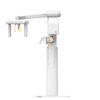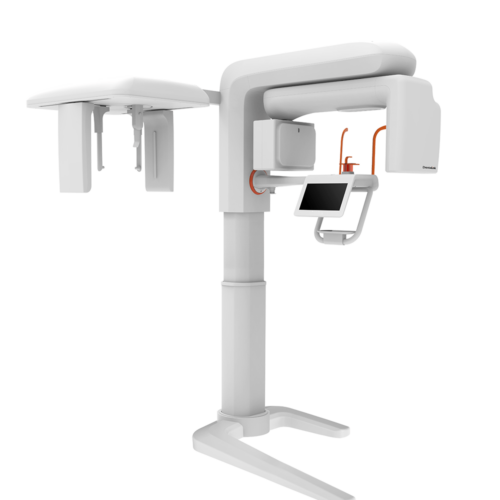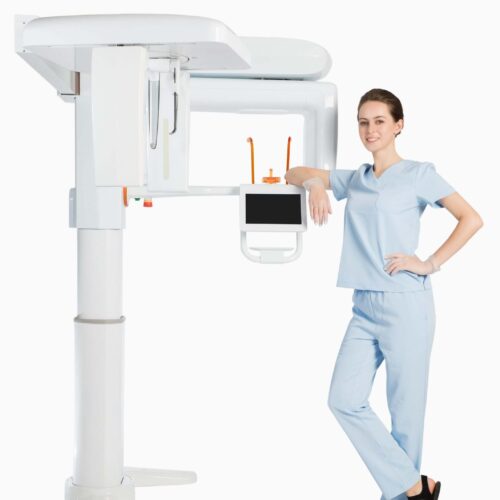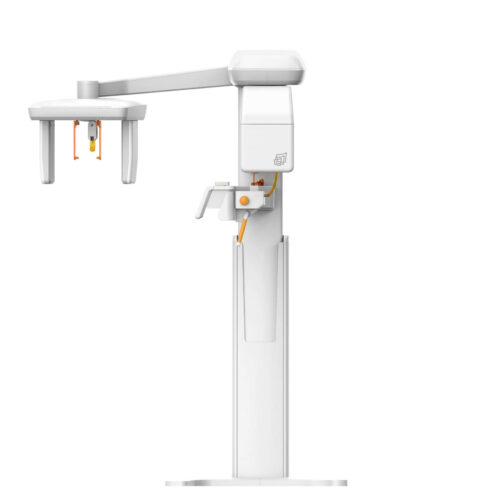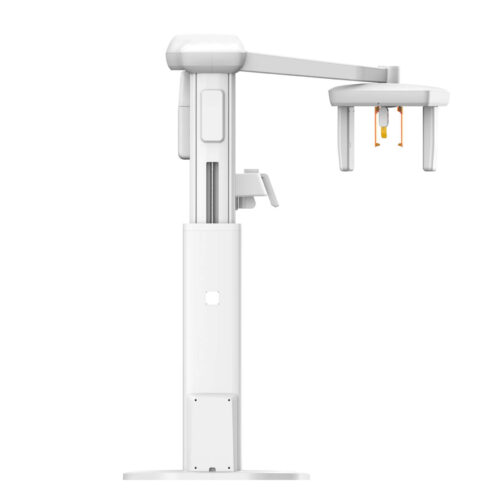Understanding Dental CBCT Scanners
What is a Dental CBCT Scanner?
A dental CBCT scanner is a specialized type of X-ray equipment used in dentistry to provide three-dimensional images of a patient’s teeth, soft tissues, nerve pathways, and bone in a single scan. Unlike traditional two-dimensional X-rays, CBCT scanners use a cone-shaped X-ray beam that rotates around the patient, capturing multiple images from different angles. These images are then reconstructed into a three-dimensional representation using advanced computer algorithms.
The technology behind CBCT scanners is rooted in computed tomography (CT), adapted for dental use. The key difference lies in the shape of the X-ray beam and the lower radiation dose used in CBCT. This adaptation makes it particularly suitable for dental applications where high-resolution images are required without exposing patients to high levels of radiation.
Components of a Dental CBCT Scanner
A CBCT scanner comprises several critical components, each playing a vital role in capturing and processing images:
- X-Ray Source and Detector: The X-ray source emits a cone-shaped beam, and the detector captures the X-rays after they pass through the patient. The quality of the detector, often an amorphous silicon flat-panel or CMOS, significantly influences the resolution of the final image.
- Gantry: The gantry is the part of the scanner that houses the X-ray source and detector. It rotates around the patient to capture images from various angles.
- Patient Positioning System: This includes the chair or stand where the patient is positioned during the scan. Accurate positioning is crucial for optimal image quality.
- Computer System: The computer system processes the captured images using sophisticated algorithms to reconstruct them into a 3D model. It also includes software for viewing and analyzing the images.
Shanghai Carejoy Medical’s 3 in 1 CBCT D55 serves as an exemplary case study. This advanced scanner combines panoramic imaging, cephalometric imaging, and CBCT capabilities. It features a high-resolution detector and intelligent algorithms for accurate image reconstruction, making it a versatile tool in a dental practice.
The Technology Behind CBCT Scanners
The technological marvel of CBCT scanners lies in their ability to produce 3D images with remarkable clarity and detail. This is achieved through a process known as volumetric tomography. As the scanner rotates around the patient, it captures a series of images from different angles. These images, called ‘views,’ are then digitally processed to create a three-dimensional model of the scanned area.
One of the key technological advancements in CBCT scanners is the reduction in radiation exposure compared to traditional CT scanners. This is achieved through the use of a pulsed X-ray beam, which emits radiation only for a fraction of the rotation time, significantly reducing the total dose. Additionally, advancements in detector technology have enabled the capture of higher resolution images with lower radiation doses.
The software used in CBCT scanners is equally important. It not only reconstructs the images but also provides tools for analysis and planning. Features like multi-planar reconstruction, 3D rendering, and the ability to integrate with other digital dental tools (like CAD/CAM systems) make CBCT scanners an indispensable tool in modern dentistry.
Key Components and Their Functions
Each component of a CBCT scanner plays a specific role in ensuring the quality and accuracy of the images:
- X-Ray Tube: The source of the X-ray beam, whose quality determines the resolution and clarity of the images.
- Detector Panel: Captures the X-rays after they pass through the patient. The efficiency and sensitivity of the detector panel are crucial for image quality.
- Rotation Mechanism: Ensures smooth and precise movement of the gantry, which is critical for capturing consistent and accurate images.
- Computer System: The backbone of the CBCT scanner, responsible for image processing, reconstruction, and storage. Advanced software algorithms enhance image quality and provide various tools for analysis.
Shanghai Carejoy Medical’s 3 in 1 CBCT D55: A Case Study
Shanghai Carejoy Medical’s 3 in 1 CBCT D55 exemplifies the integration of these components into a sophisticated dental imaging system. It features a high-resolution detector and a precision rotation mechanism, ensuring clear and accurate images. The system’s software is designed for ease of use and integrates seamlessly with other digital dental tools, making it a versatile choice for dental professionals.
The D55 model also highlights the importance of patient comfort and safety. Its ergonomic design and efficient scanning process minimize patient discomfort and reduce radiation exposure, aligning with the current trends in patient-centric medical technology.
In summary, understanding the components and technology behind dental CBCT scanners is crucial for dental professionals. It not only aids in selecting the right equipment but also ensures its optimal use in clinical practice. The next sections will delve deeper into the applications and benefits of these scanners, providing a comprehensive view of their role in modern dentistry.
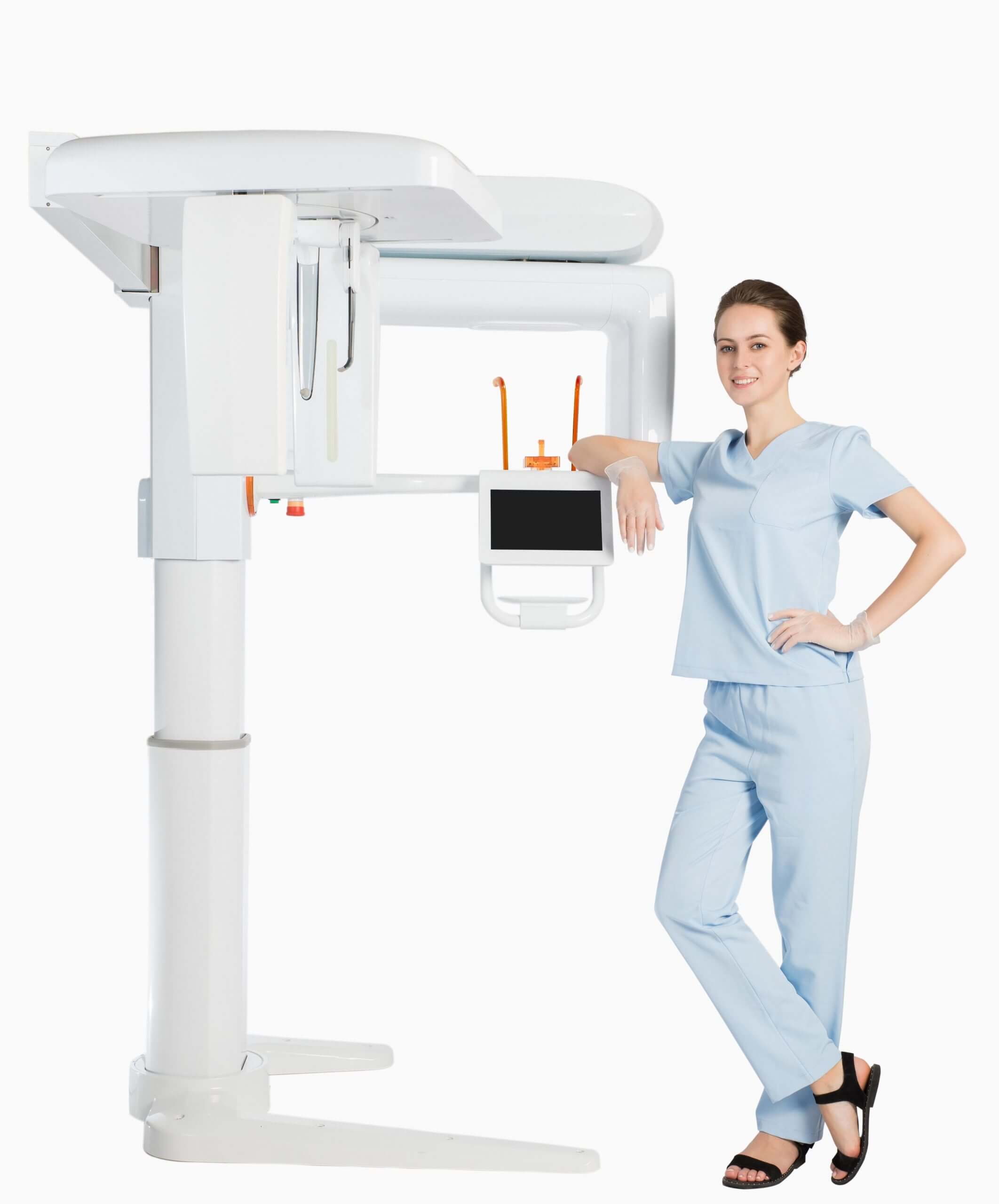
Applications and Benefits of Dental CBCT Scanners
Versatile Applications in Dentistry
Dental CBCT scanners have revolutionized various aspects of dental care, offering applications that extend far beyond traditional imaging methods. These include:
- Implantology: CBCT scanners provide detailed 3D images of the jawbone, crucial for planning dental implant placement. They help in assessing bone quality and quantity, determining the optimal location for implants, and avoiding vital structures like nerves and sinuses.
- Orthodontics: CBCT imaging is invaluable in orthodontics for diagnosing complex cases, planning treatments, and tracking progress. It offers detailed views of tooth positions, bone structures, and the relationship between different oral and maxillofacial structures.
- Endodontics: CBCT scanners enable endodontists to visualize the complex anatomy of root canals, detect root fractures, and assess bone lesions, enhancing the success rate of root canal treatments.
- Oral and Maxillofacial Surgery: CBCT imaging provides comprehensive information for surgical planning, from simple extractions to complex reconstructive surgeries.
- TMJ Analysis: CBCT scanners offer detailed images of the temporomandibular joint (TMJ), aiding in the diagnosis and treatment of TMJ disorders.
Advantages Over Traditional Imaging Methods
The benefits of using dental CBCT scanners over traditional imaging methods are significant:
- Enhanced Image Quality: CBCT scanners provide high-resolution 3D images, offering a more comprehensive view of dental structures.
- Reduced Radiation Exposure: Compared to conventional CT scans, CBCT scanners use a lower radiation dose, making them a safer option for patients.
- Accurate Diagnosis and Treatment Planning: The detailed images from CBCT scanners enable more accurate diagnoses and effective treatment planning.
- Non-Invasive Procedure: CBCT scanning is a non-invasive procedure, offering a comfortable experience for patients.
Case Studies: Real-World Applications
To illustrate the impact of CBCT technology in dentistry, let’s consider a few case studies:
- Case Study 1: A dental clinic used CBCT imaging for implant planning, resulting in precise implant placement and reduced surgical time.
- Case Study 2: An orthodontic practice utilized CBCT scans to diagnose a complex malocclusion case, leading to a successful treatment outcome.
- Case Study 3: An endodontist used CBCT imaging to identify a missed canal in a previously treated tooth, resolving a persistent infection.
These case studies demonstrate the practical benefits and applications of CBCT technology in various dental specialties.
Types and Features of CBCT Scanners
Different Models and Their Features
The market for dental CBCT scanners is diverse, with various models catering to different needs. Key differences among these models include:
- Field of View (FoV): Ranging from focused FoV for endodontic applications to larger FoVs for orthodontic and maxillofacial surgery.
- Resolution: Higher resolution scanners provide more detailed images, crucial for complex diagnoses and treatment planning.
- Size and Design: Some models are compact for small clinics, while others are larger with more features for comprehensive dental hospitals.
- Software Capabilities: Advanced software features include 3D reconstruction, image enhancement, and integration with other digital dentistry tools.
Spotlight on Shanghai Carejoy Medical’s Offerings
Shanghai Carejoy Medical’s range of CBCT scanners, such as the 3 in 1 CBCT D55, exemplifies the diversity in design and functionality. Their models are known for:
- High-resolution imaging capabilities.
- User-friendly design and software.
- Versatility in applications, from routine dental exams to complex surgical planning.
Customization and Advanced Features
Modern CBCT scanners offer various customization options and advanced features:
- Customizable FoV: Allowing practitioners to choose the appropriate FoV for specific diagnostic needs.
- Metal Artifact Reduction: Essential for patients with existing metal restorations, improving image clarity.
- Integration with CAD/CAM Systems: Facilitating digital workflow in dental practices, from diagnosis to treatment execution.
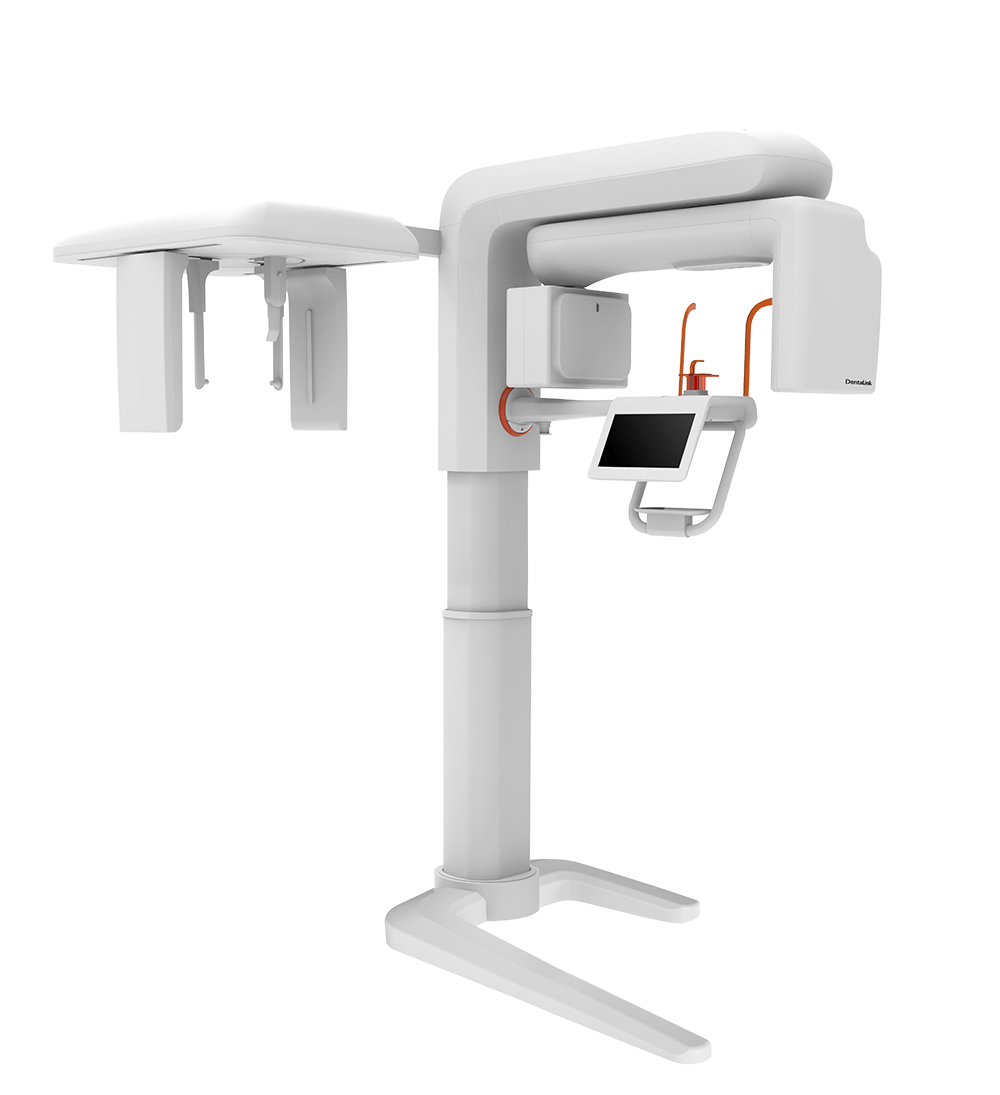
Choosing the Right CBCT Scanner
Factors to Consider When Purchasing
Selecting the right CBCT scanner involves considering several factors:
- Clinical Needs: Understanding the specific needs of your practice is crucial. For instance, an orthodontic practice might prioritize a scanner with a larger FoV.
- Budget: Balancing cost with the features and quality needed.
- Space Requirements: Considering the physical space available in your clinic.
- After-Sales Support: Ensuring reliable technical support and service from the manufacturer.
Questions to Ask Suppliers, Especially in China
When sourcing CBCT scanners from China, it’s important to ask suppliers:
- Certifications and Compliance: Are their products compliant with international standards?
- Warranty and Service Agreements: What kind of after-sales support and warranties do they offer?
- Training and Installation: Do they provide training for staff and assistance with installation?
Top Suppliers and Manufacturers
The global market for CBCT scanners features several top suppliers:
- Shanghai Carejoy Medical: Known for their high-quality imaging systems and comprehensive customer support.
- Other Major Players: Comparing features, prices, and services offered by different manufacturers to find the best fit for your practice.
The Manufacturing Process and Quality Assurance
Behind the Scenes: How CBCT Scanners are Made
The manufacturing process of dental CBCT scanners is a complex and meticulous operation, involving several critical stages:
- Design and Engineering: This initial phase involves extensive research and development to create a functional and user-friendly design. Engineers focus on integrating advanced imaging technology with ergonomic considerations.
- Component Assembly: High-quality components, such as X-ray tubes, detectors, and computer systems, are carefully assembled. Precision in this stage is crucial for the overall performance of the scanner.
- Software Integration: The hardware is integrated with specialized software, which is responsible for image processing and reconstruction. This software is continually updated to incorporate the latest advancements in imaging technology.
- Quality Control and Testing: Each unit undergoes rigorous testing to ensure it meets strict quality and safety standards. This includes testing for image accuracy, radiation safety, and mechanical reliability.
- Packaging and Shipping: Once approved, the scanners are securely packaged and prepared for shipping, ensuring they reach customers in perfect condition.
Shanghai Carejoy Medical’s Manufacturing Excellence
Shanghai Carejoy Medical exemplifies excellence in the manufacturing of CBCT scanners. Their process emphasizes:
- Cutting-edge technology and innovation in design.
- Strict adherence to international quality and safety standards.
- Continuous improvement and updates to their product line, ensuring they remain at the forefront of dental imaging technology.
Future Trends and Developments
Innovations on the Horizon
The future of dental CBCT technology is promising, with several innovations expected to enhance its capabilities further:
- Artificial Intelligence Integration: AI algorithms are being developed to improve image analysis, offering more accurate diagnoses and treatment planning.
- Increased Resolution with Lower Radiation: Ongoing research aims to achieve higher image resolutions while further reducing radiation exposure.
- Compact and Affordable Models: Efforts are being made to develop smaller, more affordable CBCT scanners, making this technology accessible to more dental practices.
The Role of Chinese Manufacturers in Shaping the Future
Chinese manufacturers, including Shanghai Carejoy Medical, play a significant role in the evolution of CBCT technology. Their focus on innovation, affordability, and quality positions them as key players in the global dental imaging market. They are not only meeting current demands but also shaping future trends in dental diagnostics.
FAQ Tips: In-Depth Insights into Dental CBCT Scanners
1. What is the difference between a dental CBCT scanner and a traditional X-ray machine?
Dental CBCT scanners and traditional X-ray machines differ primarily in the type of images they produce and the technology they use. Traditional X-ray machines create two-dimensional images and are great for detecting cavities and examining the health of the tooth and surrounding bone. In contrast, CBCT scanners provide three-dimensional images, offering a comprehensive view of the dental structures, including bones, teeth, nerves, and soft tissues. This 3D imaging capability allows for more accurate diagnoses and precise treatment planning, especially in complex cases such as implantology, orthodontics, and oral surgeries.
2. How does a CBCT scanner enhance dental treatment planning?
CBCT scanners enhance dental treatment planning by providing detailed 3D images that allow for a more accurate assessment of dental structures. This is particularly beneficial in planning dental implants, as the scanner can accurately measure bone density and determine the optimal placement for implants. In orthodontics, CBCT scans help in understanding the relationship between teeth, jawbones, and the skull, aiding in more effective treatment planning. For endodontic treatments, CBCT scans reveal the intricate anatomy of root canals, assisting in more successful root canal therapies.
3. What should I consider when choosing a CBCT scanner for my practice?
When choosing a CBCT scanner, consider the following factors:
- Clinical Needs: Assess the specific needs of your practice. If you specialize in implants, a scanner with high-resolution imaging and a larger field of view (FoV) might be ideal.
- Budget: Determine your budget for the equipment, keeping in mind the long-term return on investment.
- Space: Evaluate the space available in your clinic, as CBCT scanners come in various sizes.
- Software Compatibility: Ensure the scanner’s software is compatible with your existing systems and offers the features you need.
- After-Sales Support: Consider the warranty, technical support, and training provided by the manufacturer.
4. How does radiation exposure from a CBCT scan compare to traditional X-rays?
CBCT scanners generally use a higher radiation dose than traditional dental X-rays but significantly less than conventional medical CT scans. Advances in CBCT technology have led to the development of low-dose CBCT scanners, which further minimize radiation exposure while still providing high-quality images. It’s important to use CBCT judiciously, adhering to the ALARA (As Low As Reasonably Achievable) principle to ensure patient safety.
5. Can CBCT scanners be integrated with other digital dentistry tools?
Yes, modern CBCT scanners can be integrated with various digital dentistry tools, such as CAD/CAM systems, digital impression systems, and dental practice management software. This integration facilitates a seamless digital workflow, enhancing treatment planning, patient communication, and overall efficiency in dental practices.
6. What are the maintenance requirements for a CBCT scanner?
Regular maintenance of a CBCT scanner is crucial for its longevity and optimal performance. This includes:
- Routine Calibration: Ensuring the scanner is calibrated regularly for accurate imaging.
- Software Updates: Keeping the software updated to the latest version.
- Regular Cleaning: Keeping the scanner clean, especially the X-ray source and detector.
- Professional Servicing: Scheduling regular check-ups with a qualified technician to identify and fix any potential issues.
7. How do I ensure my patients’ safety during a CBCT scan?
To ensure patient safety during a CBCT scan:
- Use Lead Aprons: Provide lead aprons to shield patients from unnecessary radiation.
- Proper Positioning: Ensure the patient is correctly positioned to minimize movement and reduce the need for repeat scans.
- Follow Protocols: Adhere to recommended scanning protocols and use the lowest radiation dose necessary for the diagnostic task.
- Patient Education: Inform patients about the procedure and its benefits to alleviate any concerns.
8. What training is required to operate a CBCT scanner?
Operating a CBCT scanner requires training in radiographic techniques, understanding of radiation safety, and familiarity with the specific software and hardware of the scanner. This training is typically provided by the manufacturer or a certified professional. Continuous education is also important to stay updated with the latest advancements and best practices in CBCT imaging.
9. How can CBCT technology benefit orthodontic treatments?
In orthodontics, CBCT technology provides detailed images of the craniofacial structures, aiding in the diagnosis of complex cases, planning of orthodontic treatments, and monitoring of treatment progress. It allows for precise measurements of bone structures, assessment of tooth positions, and visualization of airways, which are crucial in designing effective orthodontic treatment plans.
10. What future developments can we expect in CBCT technology?
Future developments in CBCT technology are likely to focus on:
- Enhanced Image Quality: Further improvements in resolution and image clarity.
- AI Integration: Using artificial intelligence for automated image analysis and diagnosis.
- Reduced Radiation Doses: Continued efforts to minimize radiation exposure.
- Compact Design: Development of smaller, more portable units suitable for smaller practices.
Ready to Elevate Your Dental Practice? Connect with Us Today
Are you considering enhancing your dental clinic with the latest in CBCT technology? Do you have questions about how a dental CBCT scanner can transform your diagnostic and treatment capabilities? We’re here to help guide you through every step of the process.
📧 Email Us: For detailed inquiries, specific requests, or a personalized consultation, reach out to us at [email protected]. Our expert team is ready to provide you with all the information you need to make an informed decision.
📱 WhatsApp Us: Prefer a quick chat? Send us a message on WhatsApp at +8615951276160. Our responsive support team is available to answer your questions, provide product insights, and assist you with any immediate needs.
Whether you’re looking to upgrade your existing equipment or venturing into the world of advanced dental imaging for the first time, we’re here to support you. Our commitment is to provide you with top-quality products and exceptional customer service.
Don’t wait to take your dental practice to the next level. Contact us today and discover the difference a state-of-the-art dental CBCT scanner can make!

